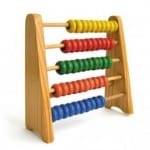Note: Keeping Your New Year’s Resolutions Using Quality Days is the second of a three part series on creating and sticking to your New Year’s Resolutions. Check out Part 1: Why People Fail New Year’s Resolutions, or check back soon for Part 3.
In the last post, we talked about five reasons people fail New Year’s Resolutions:
- They have an all or nothing mentality.
- They make too many resolutions.
- Their resolutions are not specific.
- They don’t track how they’re doing.
- They don’t make adjustments.
So how do you avoid these mistakes and keep your New Year’s resolutions? By establishing “Quality” and “Perfect” days. First a little history…

A New Year of Resolutions
At the beginning of 2011 I decided there were five things I would ideally do every day, five daily habits I wanted to establish:
- Wake up without hitting snooze.
- Complete a task for Humor That Works.
- Do at least 20 minutes of physical activity.
- Eat at least 2 fruits and/or vegetables.
- Spend at least 30 minutes strategically disengaging.
In years past, I would have considered a day “successful” only if I had done all five habits that day (the all or nothing mentality). The problem is that the #1 habit on my list is the hardest habit I’ve ever tried to instill AND it happens first thing when I wake up.
If I had an all or nothing mentality and hit snooze once in the morning, the rest of my day would be toast. There would be no point in completing any of the other four because I couldn’t be “successful” no matter what I did.
But logically we can see that doesn’t make sense. Doing the other four things, or even one of them, would be better than none of them. So I developed a system that worked for me, one that involves five components.

The Five Components of the Quality Day System
1. Quality and Perfect Days
Rather than try to strive for perfection every single day, my goal was to shoot for achieving a majority of my daily goals: 3 out of 5. If I completed any 3 out of the 5 habits, I considered it a “Quality Day.” If I completed all 5, I considered it a “Perfect Day.”
The mentality behind this system is that even if I hit snooze in the morning, I still had something to shoot for: a Quality Day. Sure it’s not perfect, but it is significantly better than accomplishing 0 out of 5, or even 3 out of 5 and feeling bad about myself. I changed my mindset to say I don’t need to be perfect, I just want to be “Quality.”
2. Five (and Only Five) Habits
While there are a number of other things I’d love to do every day (play guitar, stretch, and hundreds of other things), I knew that if I tried to do too many of them, I’d likely end up doing none of them. Tracking them would be a pain and there would be no way I could consistently complete 10+ goals every day.
Instead, I decided to be selective and choose the five goals most important to me. Why five? First, it’s a small enough number to easily remember (I can count them on one hand, and yes this was taken into consideration). Second it was a large enough number to challenge me and diverse enough to cover the important facets of my life (business, health, personal).
Finally it gave me variety. Some days you just don’t feel like exercising. On those days, I had four other things to choose from to still get a quality day.
3. Binary Habits
The only criteria I had for creating or specifying my goals was that they had to be binary–I wanted to be able to say at the end of the day, without any thinking, either “yes” or “no” I completed each habit.
This forced me to make specific, yet simple goals. Rather than just say “do physical activity” I specified that it was “20 minutes of physical activity.” That way I didn’t waste time trying to decide if whatever I did was “enough” physical activity to count. Was it at least 20 minutes of physical activity? Yes or no.
Similarly I specified that it was at least 2 fruits and/or vegetables a day, but I didn’t count how many I ate. Sure there were days I had 4, 8, 12 servings of fruits and vegetables, but I didn’t want to add the cumbersome process of tracking how many I actually I had. At the end of the day I just ask, did I have at least 2, yes or no.
4. Daily Tracking
By using binary goals, it was easy to track my progress for each day. At first I started tracking on a paper calendar in my office. I created an icon for each habit and would mark that icon for each day I completed it. Half-way through the year I switched to using Excel (this allowed me to calculate the number of Quality/Perfect days more easily). Now I’m using 42goals.com to now track my daily progress (more on 42goals in the next post).
The point was I wanted a system that would allow me to quickly and easily track my progress for a day. For the most part, I tried to track my status at the end of each day (when it was fresh on my mind), but I’d be lying if I said I did it every day. There were many a-time where I had to go back and add how I did for the last 6 or 7 days (another advantage of only having five to track was actually being able to remember what I completed).
5. Weekly / Monthly Reviews
The last part of the system was to review my current progress during my weekly and monthly reviews (I take 20-minutes every Sunday night to review the week / take a peak at what’s to come the following week; I take about 40-minutes to review my progress on the first day of every month).
By tallying up the totals and reviewing them by habit, I could see which habits were consistent and which ones were tougher to complete. As a result, I could make adjustments.
During one particularly bad stretch of hitting snooze, I decided to make sure I was going to bed earlier just to try to get back on track (more intentional focus on that habit). It meant missing out on physical activity on one or two nights, but I wanted to make sure I gave dedicated attention to snooze so I could re-establish my no-snooze ways. And since I was shooting for “Quality Days” it was OK for me to miss some physical activity in lieu of more sleep.

The Success of 2011
So has it worked? Considering I’m writing an elaborate article on what I did, you probably already assumed that it did, and you’d be correct.
My goal at the beginning of the year was 250 Quality Days. Notice that it wasn’t 365. Again, I didn’t want to miss one day and then never come back to it because I couldn’t achieve my goal.
Why 250? Because that’s the assumed number of “work days” in a year (if you assume 5-day work weeks and 2-weeks of vacation, you get 5 days a week X 50 weeks = 250 days). That would give me license to take off the weekends if I wanted to.
Also I didn’t set any goals for Perfect Days. I didn’t want to put undue pressure on achieving perfection, I merely wanted to track it for analytic purposes (what was my hardest habit, easiest, etc). It’s nice to know but it isn’t my goal.
So, with a goal of 250, how have I done this year? Not counting today, there have been 348 total days in 2011 so far. Of those 348, I’ve had 345 Quality Days (99%) and 175 Perfect Days (50%). The three days I missed were days I was sick and couldn’t have cared less about completing three of five goals.
But this hasn’t just worked for me. I’ve shared this idea with some friends and family and they too are finding success. Not everyone is accomplishing everything they want, but they’re all making progress towards their goals and they’ve all said it’s been a helpful process.
Why It Works
Is this process guaranteed to work everyone? No. This might be too simple for some people, or too complex for others. But for me and the people I’ve shared it with, it seems to work. And for good reason too.
First, it helps to re-frame the definition of success from “perfect” to “quality.” Sure perfect is great to achieve, but quality is pretty darn good too. Second, it forces you to choose your top priorities and limit yourself to a manageable number of daily goals. Third, it ensures you have specific goals that are easily measured, and fourth it creates an easy way to actually do the measuring. And finally, it allows you to see where you need to make adjustments, and gives you the flexibility to change your priorities based on your needs.
If you’re ready to give the Quality Day System a try in 2012, be sure to check our next post on How to Set Up Your Quality Day System.
